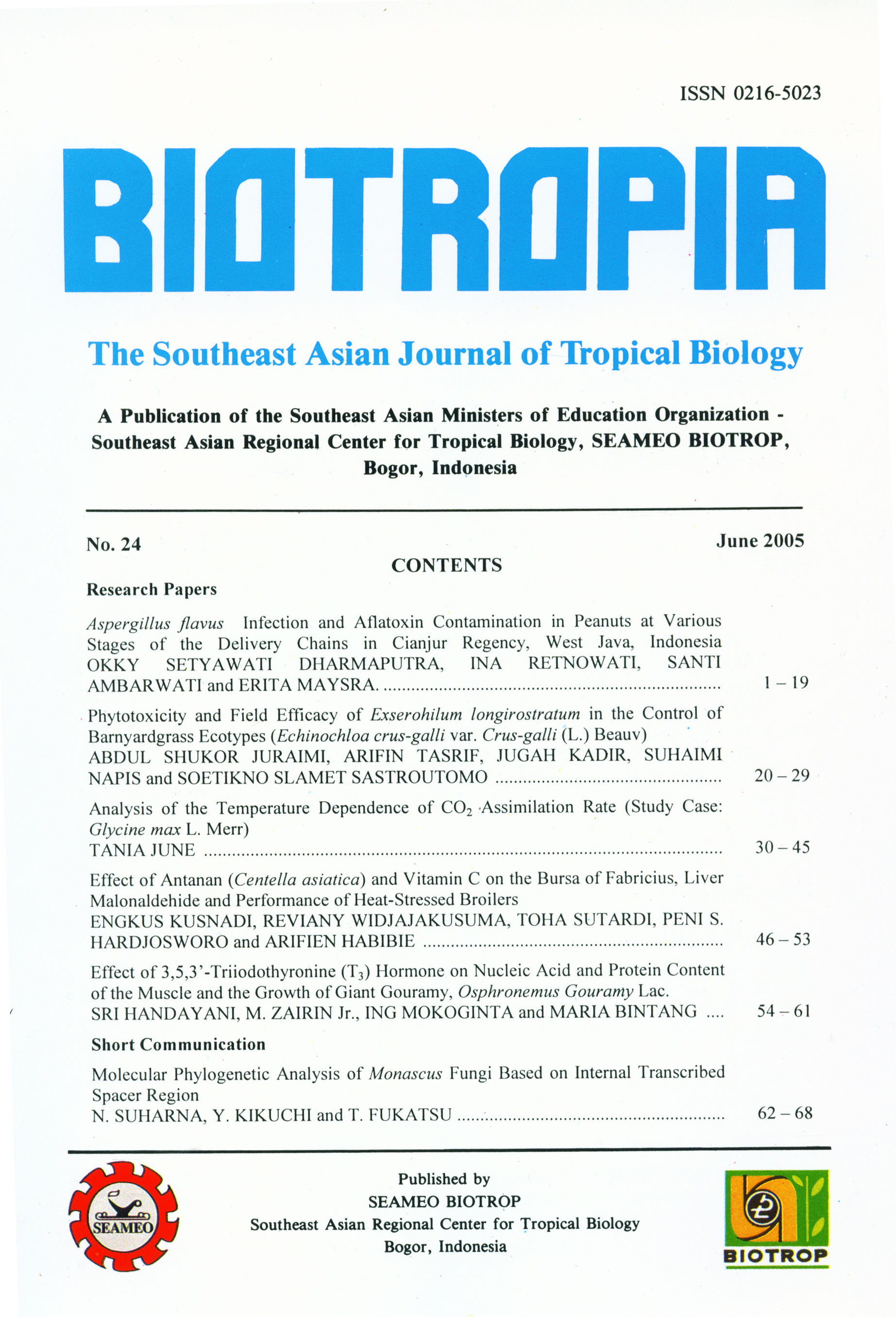
Tags
PHYTOTOXICITY AND FIELD EFFICACY OF EXSEROHILUM LONGIROSTRA JC/MIN THE CONTROL OF BARNYARDGRASS ECOTYPES (ECHINOCHLOA CRUS-GALLI VAR. CRUS-GALLI(L.) BEAUV)
Content Language : English

ysia and Indonesia were tested for their susceptibility to the potential bioherbicide (Exserohilum longirostratum).
Bamyardgrass seedlings at the 2-3-lcaf stage were treated with 2.5xl07
conidia/ml from E. longirostratum at different
application frequencies (single, double and triple). In addition, aqueous extract assays were evaluated for the presence of a
phytotoxic compound responsible for the virulence of the bioherbicide. Results of the study showed that disease severity
significantly increased 20 days after treatment and resulted in mortality of the seedlings. Ecotypes from Perak and
Lampung were most susceptible to the bioherbicide upon triple applications. Percentage dry weight reductions were
86.34 and 83.14%, respectively. Other ecotypes (Melaka, Banten and South Sulawesi) were observed to have a relatively
similar response. Moreover, aqueous extracts of E. longirostratum increased mortality up to 92.50% of bamyardgrass
seedlings. These findings suggest that regular (double and triple) applications of E. longirostratum at a concentration of
2.5xl07
conidia/ml significantly increased mortality among bamyardgrass ecotypes. Mortality of the seedlings was
attributed to the presence of a secondary phytotoxic metabolite.
Link

This work is licensed under a Creative Commons Attribution-NonCommercial-NoDerivatives 4.0 International License.
